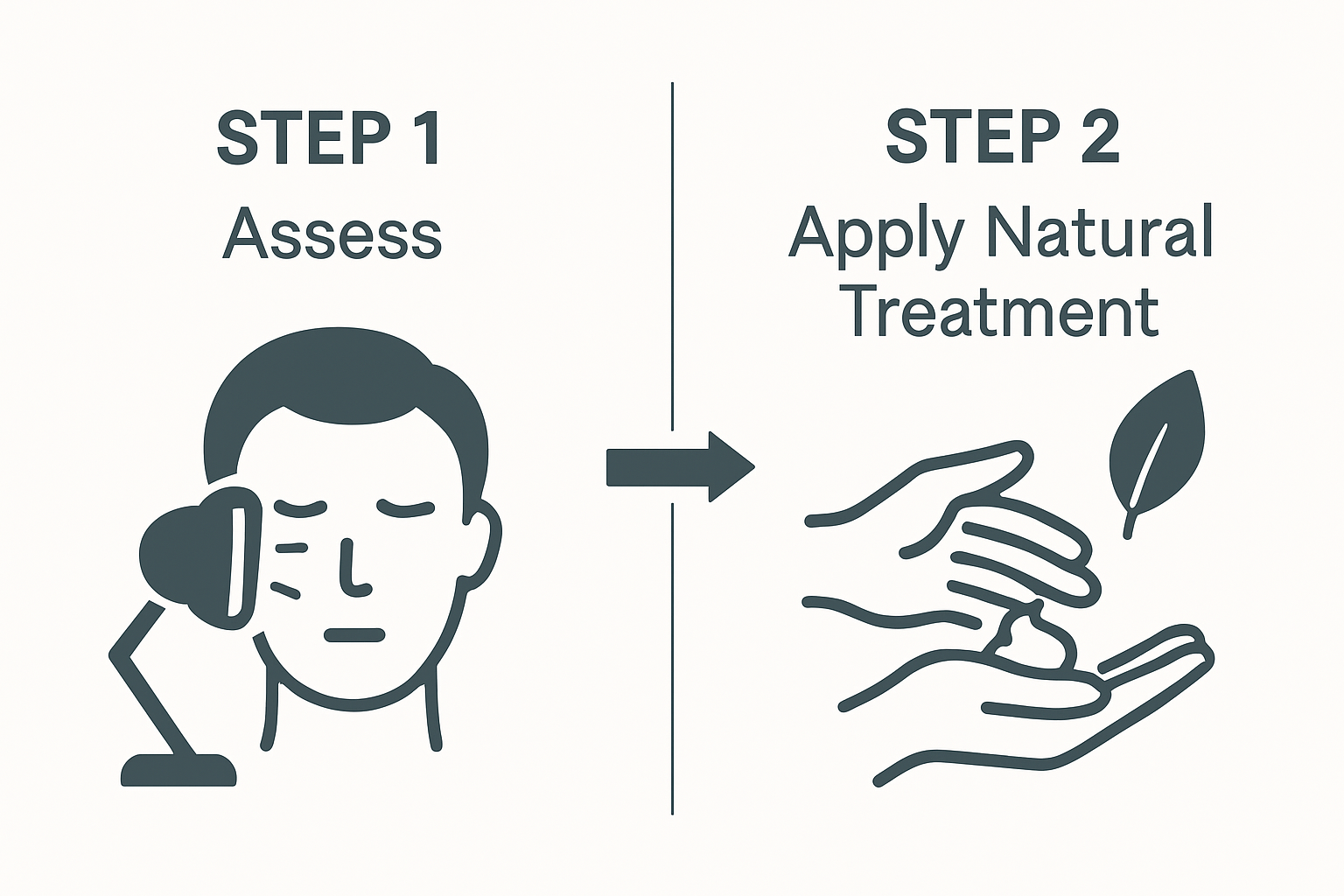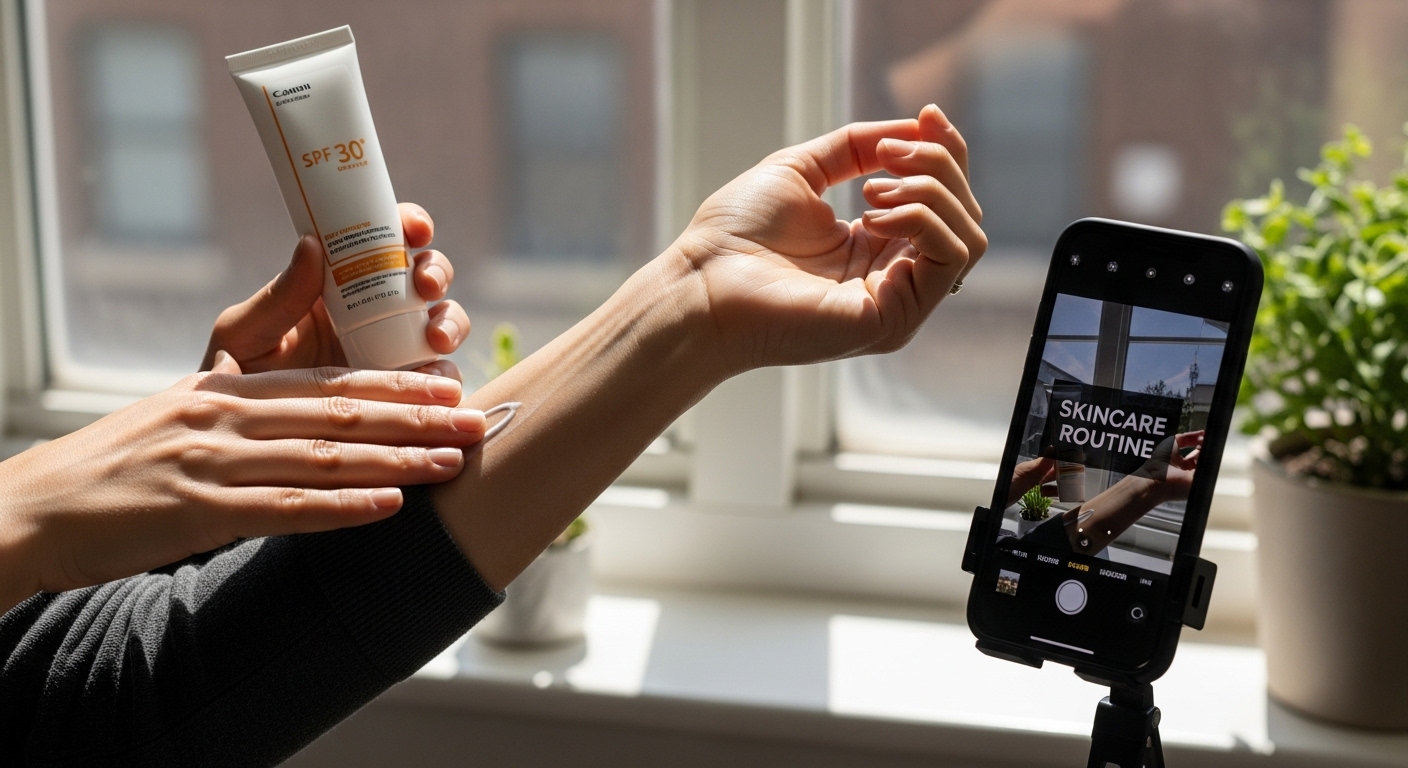How to Treat Skin Pigmentation: Effective Solutions for Radiant Skin
Struggling with dark spots or uneven skin tone is more common than you might think. In fact, over 40 percent of adults experience some form of skin pigmentation during their lifetime. Most people rush to expensive creams or harsh treatments, hoping for instant results. Surprising as it sounds, the most effective ways to treat pigmentation often start with habits and routines you can control at home.
Table of Contents
- Step 1: Assess Your Skin Type And Pigmentation
- Step 2: Research Natural Treatment Options
- Step 3: Develop A Consistent Skincare Routine
- Step 4: Implement Lifestyle Changes For Skin Health
- Step 5: Monitor Progress And Adjust Treatments
Quick Summary
| Key Point | Explanation |
|---|---|
| 1. Assess your skin type thoroughly | Understanding your unique skin characteristics is essential for effective pigmentation treatment. Conduct a detailed evaluation before proceeding with any remedies. |
| 2. Explore reliable natural treatments | Investigate botanical ingredients like Vitamin C and licorice extract, known for their pigmentation-reducing properties. Ensure you use scientifically supported information. |
| 3. Establish a consistent skincare routine | Create a structured morning and evening routine focusing on cleansing, treatment, and protection, especially with sunscreen to prevent further pigmentation. |
| 4. Implement healthy lifestyle changes | Adopting a holistic approach with proper nutrition, hydration, and stress management significantly impacts skin health and pigmentation treatment efficacy. |
| 5. Monitor progress and adapt strategies | Keep a comprehensive skin journal to track changes, and consult professionals regularly to adjust treatments based on your observations and results. |
Step 1: Assess Your Skin Type and Pigmentation
Successfully treating skin pigmentation begins with a comprehensive understanding of your unique skin characteristics. This critical first step involves thoroughly evaluating your skin’s type, tone, and specific pigmentation concerns, which will ultimately guide your treatment strategy.
Skin assessment is not a one-size-fits-all process. Professional dermatologists recommend a systematic approach that combines visual examination, personal medical history, and specialized diagnostic techniques. Your skin’s response to pigmentation depends on multiple factors, including melanin concentration, underlying health conditions, and genetic predispositions.
Understanding Your Skin’s Baseline
Begin by carefully examining your skin in natural, consistent lighting. Look for distinct pigmentation patterns such as uneven skin tone, dark spots, melasma, or post-inflammatory hyperpigmentation. Pay close attention to areas frequently exposed to sunlight, like your face, neck, and hands.
According to research from the Journal of Clinical and Aesthetic Dermatology, understanding your baseline skin condition is crucial for developing an effective treatment plan.
Key characteristics to document during your assessment include:
- Skin tone variation across different body areas
- Existing pigmentation patterns and their potential origins
- Sensitivity to sun exposure
- History of skin inflammation or scarring
Consider consulting a skincare professional who can perform a detailed analysis using advanced tools like a Wood’s lamp or digital skin analyzer. These specialized devices can reveal underlying pigmentation issues not visible to the naked eye, providing a more precise understanding of your skin’s condition.
Remember that accurate skin assessment is the foundation of any successful pigmentation treatment. By taking a methodical, informed approach, you’ll be better equipped to select targeted interventions that address your specific skin concerns effectively.
Step 2: Research Natural Treatment Options
Navigating the world of natural pigmentation treatments requires a strategic and informed approach. After assessing your skin type, exploring natural remedies becomes an empowering next step in your journey towards achieving more even and radiant skin. Natural treatments offer a gentler alternative to harsh chemical interventions, focusing on holistic healing and skin restoration.
Your research should begin by understanding the botanical ingredients known for their skin-brightening properties. Vitamin C, for instance, emerges as a powerhouse antioxidant that can help reduce melanin production and promote skin healing. According to research from the Journal of Cosmetic Dermatology, herbal preparations demonstrate promising potential in addressing pigmentation concerns.
Exploring Botanical Ingredients
Start by investigating natural ingredients with scientifically supported skin-lightening properties. Key botanical extracts to explore include:
- Licorice root extract, which contains glabridin that inhibits melanin production
- Mulberry extract, known for its natural skin-brightening compounds
- Aloe vera, which can help reduce inflammation and support skin healing
- Green tea, rich in antioxidants that combat skin discoloration
While researching, critically evaluate the source and quality of information. Academic journals, dermatological publications, and expert-authored resources provide the most reliable insights. Look for studies that demonstrate not just anecdotal evidence, but scientifically measured outcomes in skin pigmentation reduction.
Consider creating a comprehensive comparison chart of natural ingredients, noting their specific mechanisms of action, potential side effects, and recommended application methods. This systematic approach will help you make an informed decision about which natural treatments align best with your unique skin profile.

Remember that natural does not automatically mean completely safe. Always perform a patch test before fully incorporating a new treatment, and consult with a skincare professional if you have sensitive skin or pre-existing dermatological conditions. Your diligent research and cautious implementation will be key to successfully managing skin pigmentation through natural remedies.
Below is a comparison of common natural ingredients discussed in the article, summarising their primary actions, benefits, and cautions to help you assess suitable options for treating skin pigmentation.
| Ingredient | Primary Action | Main Benefit | Caution/Note |
|---|---|---|---|
| Vitamin C | Antioxidant; reduces melanin production | Brightens skin and promotes healing | May cause mild irritation in sensitive skin |
| Licorice Root Extract | Inhibits melanin synthesis | Helps lighten dark spots and even skin tone | Patch test recommended to avoid allergic reaction |
| Mulberry Extract | Natural skin-brightener | Supports gradual lightening of pigmentation | Limited research on long-term effects |
| Aloe Vera | Anti-inflammatory; heals skin | Reduces redness and supports skin recovery | Use pure gel to minimise risk of additives reaction |
| Green Tea | Antioxidant; protects from damage | Combats discolouration and soothes irritation | External use usually safe; monitor for skin reaction |
Step 3: Develop a Consistent Skincare Routine
Creating a consistent skincare routine is the cornerstone of effectively managing and reducing skin pigmentation. This step transforms your sporadic efforts into a systematic approach that addresses your skin’s specific needs and supports long-term healing and restoration. Consistency is not just about applying products, but about developing a disciplined, targeted strategy that works synergistically to combat uneven skin tone.
Your skincare routine should be viewed as a carefully choreographed sequence of treatments, each product playing a specific role in your skin’s transformation. According to research published in PubMed, a comprehensive six-product regimen can significantly improve skin tone and texture when implemented consistently.
Morning and Evening Protocols
Design your routine around two critical windows: morning and evening. Morning skincare focuses on protection and prevention, while evening skincare concentrates on repair and regeneration. Start with a gentle cleanser that does not strip your skin’s natural barriers. Follow this with a targeted treatment serum containing ingredients like vitamin C or niacinamide, which help combat pigmentation.
Key routine components to include:
- Gentle, pH-balanced cleanser
- Brightening serum with active ingredients
- Lightweight, non-comedogenic moisturizer
- Broad-spectrum sunscreen (minimum SPF 30)
- Nighttime repair treatment
Pay special attention to sunscreen application, as UV exposure is a primary contributor to pigmentation issues. Apply a generous amount of sunscreen 15 minutes before sun exposure, and reapply every two hours when outdoors.
 This simple step can dramatically slow down melanin production and prevent further skin discoloration.
This simple step can dramatically slow down melanin production and prevent further skin discoloration.
Remember that your routine is a personal journey. Monitor your skin’s response, be patient with the process, and be prepared to make subtle adjustments. Photograph your skin periodically to track progress, and don’t hesitate to consult a dermatologist if you’re not seeing the desired results. Your commitment to a consistent, thoughtful skincare routine is your most powerful tool in achieving radiant, even-toned skin.
Step 4: Implement Lifestyle Changes for Skin Health
Addressing skin pigmentation extends far beyond topical treatments and skincare products. Your daily lifestyle choices play a profound role in determining skin health, influencing how effectively your body manages melanin production and skin repair. Transforming your lifestyle becomes a holistic approach to managing pigmentation, creating an internal environment that supports skin healing and prevents further discoloration.
Nutrition emerges as a critical factor in your skin’s appearance and resilience. Antioxidant-rich foods become your allies in combating skin inflammation and supporting cellular repair. Focus on incorporating vibrant, colorful fruits and vegetables that provide essential nutrients like vitamins A, C, and E, which help neutralize free radicals and protect your skin from oxidative stress.
According to research examining hyperpigmentation management, lifestyle modifications can significantly impact skin health. Hydration plays a crucial role in this transformation. Drinking adequate water helps flush toxins, supports cellular function, and maintains skin elasticity. Aim for at least eight glasses of water daily, adjusting based on your activity level and climate.
Key lifestyle modifications to consider:
- Limit direct sun exposure, especially during peak hours (10 am to 4 pm)
- Wear protective clothing with UPF (Ultraviolet Protection Factor)
- Manage stress through meditation, yoga, or regular exercise
- Prioritize consistent, quality sleep
- Minimize alcohol and eliminate smoking
Stress management becomes another fundamental aspect of your skin health strategy. Chronic stress triggers hormonal changes that can exacerbate pigmentation issues, particularly cortisol production, which influences melanin synthesis. Incorporate stress-reduction techniques like deep breathing, regular exercise, and mindfulness practices to create a more balanced internal environment.
Physical activity offers multiple benefits beyond stress reduction. Exercise increases blood circulation, supporting skin cell renewal and helping transport nutrients more effectively throughout your body. Aim for at least 30 minutes of moderate physical activity most days of the week, choosing activities you genuinely enjoy to ensure long-term consistency.
Remember that lifestyle changes are a gradual process. Be patient with yourself, track your progress, and celebrate small victories.
The table below organises key lifestyle modifications mentioned in the article by area of focus and intended skin health benefit, assisting you in adopting a holistic routine to support pigmentation treatment.
| Lifestyle Modification | Area of Focus | Intended Skin Benefit | Additional Guidance |
|---|---|---|---|
| Limit sun exposure | UV protection | Reduces melanin overproduction/discolouration | Avoid 10 am–4 pm; seek shade |
| Wear protective clothing | Barrier function | Shields skin from harmful rays | Choose UPF-rated garments |
| Manage stress | Hormonal balance | Prevents cortisol-triggered pigmentation | Use meditation, yoga, or exercise |
| Maintain good hydration | Internal support | Promotes skin cell renewal and elasticity | Aim for at least 8 glasses daily |
| Eat antioxidant-rich foods | Nutrition | Neutralises free radicals, aids healing | Focus on vitamins A, C, and E |
| Prioritise quality sleep | Regeneration | Supports skin repair and resilience | Keep a regular schedule |
| Avoid alcohol and smoking | Toxin reduction | Prevents inflammation, enhances skin clarity | Eliminate or minimise completely |
Step 5: Monitor Progress and Adjust Treatments
Successful skin pigmentation treatment is not a static process, but a dynamic journey requiring consistent observation, thoughtful analysis, and strategic adaptation. Monitoring your progress becomes as crucial as the initial treatment selection, transforming your approach from a rigid protocol to a responsive, personalized strategy that evolves with your skin’s changing needs.
Documentation serves as your primary tool in this monitoring process. Create a comprehensive skin journal that tracks not just visual changes, but includes detailed notes about product usage, environmental factors, dietary modifications, and subtle skin responses. Photograph your skin under consistent lighting and from the same angles every two to four weeks, ensuring you capture images that allow accurate comparative analysis.
According to research examining skin pigmentation tracking, quantitative assessment methods can provide objective insights into your skin’s transformation. Consider using digital tools or smartphone applications designed for skin tracking, which can help you visualize progress more scientifically and eliminate subjective interpretations.
Key monitoring indicators to track:
- Changes in pigment intensity and distribution
- Skin texture and overall tone evenness
- Frequency and severity of new pigmentation spots
- Skin hydration and resilience levels
- Potential side effects from treatments
Professional consultation remains a critical component of effective monitoring. Schedule periodic check-ins with a dermatologist or skincare professional who can provide expert analysis using advanced diagnostic tools. These specialists can identify subtle changes that might escape your personal observation and recommend precise treatment adjustments.
Remember that skin healing is not linear. Some treatments might show immediate results, while others require weeks or months of consistent application. Be patient with your skin’s unique regeneration process, and avoid becoming discouraged by temporary plateaus. Your commitment to systematic monitoring transforms potential frustration into a scientific approach of continuous improvement.
Adapt your treatment plan based on objective observations. If you’re not seeing desired results after 8-12 weeks, it might be time to modify your approach. This could mean adjusting product concentrations, introducing complementary treatments, or consulting a professional for a more targeted intervention. Your skin is dynamic, and so should be your treatment strategy.
Ready to Achieve Radiant, Even-Toned Skin?
Have you identified stubborn pigmentation, dark spots or uneven skin tone but find that home remedies and lifestyle changes can only take you so far? If you are tired of facing persistent hyperpigmentation or melasma, now is the perfect time to discover professional help. At Phoenix Biomedical.ie, we offer evidence-based pigmentation treatments performed by expert practitioners in a medical setting. Our advanced laser therapies and personalised protocols target the root causes of pigment issues, unlike over-the-counter approaches. Experience the confidence that comes from real results and specialist care.

Take the next step towards a healthier complexion and lasting clarity. See real patient results, explore our advanced pigmentation solutions, and speak to a qualified clinician about a treatment plan that fits your skin’s needs. Secure your consultation at Phoenix Biomedical.ie today and unlock the clinical expertise trusted by clients across Ireland.
Frequently Asked Questions
What are the common types of skin pigmentation?
Common types of skin pigmentation include uneven skin tone, dark spots, melasma, and post-inflammatory hyperpigmentation. Each type has different causes and may require specific treatment approaches.
How can I assess my skin type before starting treatment?
To assess your skin type, examine your skin in natural light for patterns of pigmentation, note any areas of uneven tone, and consider your skin’s sensitivity to sun exposure and history of inflammation or scarring. Consulting a skincare professional for a detailed analysis can also be beneficial.
What natural ingredients can help reduce skin pigmentation?
Several natural ingredients are known for their skin-brightening properties, including vitamin C, licorice root extract, mulberry extract, aloe vera, and green tea. These ingredients can inhibit melanin production and support skin healing.
Why is consistency important in a skincare routine for pigmentation?
Consistency is crucial in a skincare routine because it allows active ingredients to work effectively over time. A systematic approach ensures that your skin receives regular care and treatment, which is vital for addressing pigmentation issues and achieving even-toned skin.
Recommended
- Mesoestetic Mesoprotech Melan SPF 130+ Pigment Control 50ml – Phoenix Biomedical
- SkinCeuticals Glow Peel – Phoenix Biomedical
- SkinCeuticals Glow Peel Carlow – Phoenix Biomedical
- ZO Skin Health Restorative Facial (Anti-Redness & Rosacea) – Phoenix Biomedical
- Professional LED Therapy at Home: Worth the Investment? – The Noble Thread
